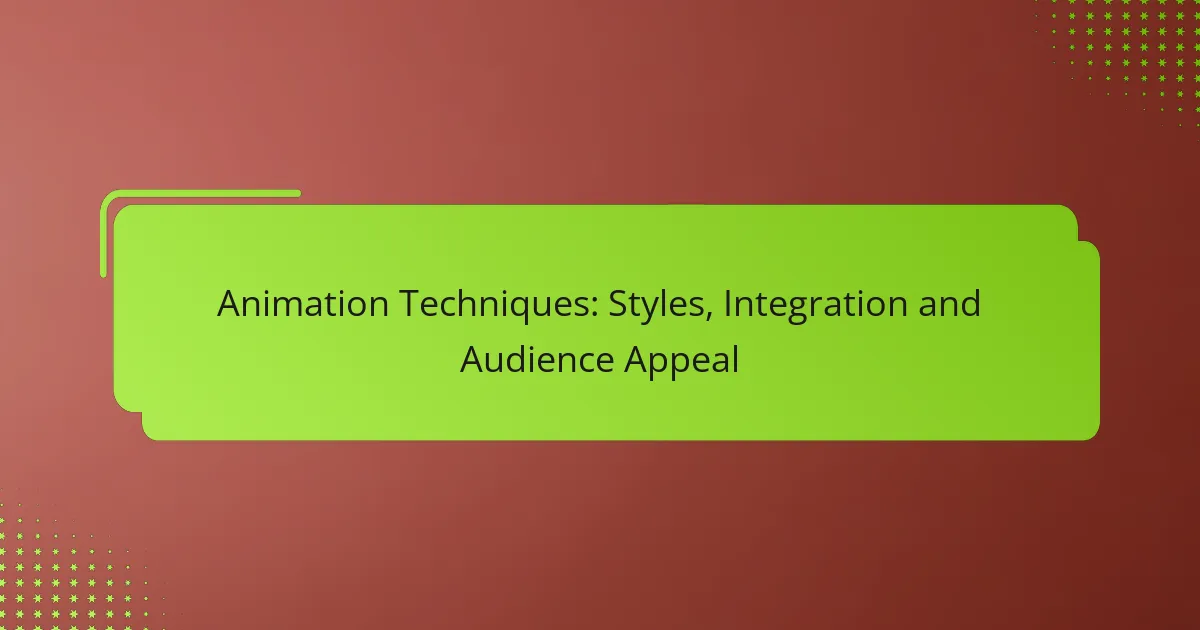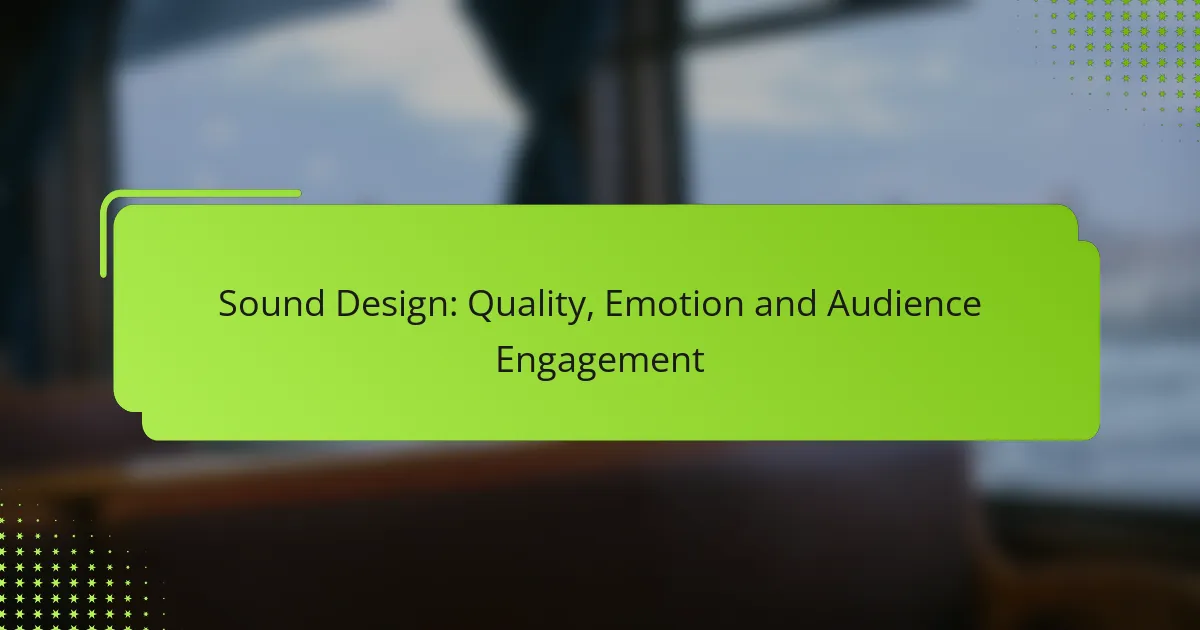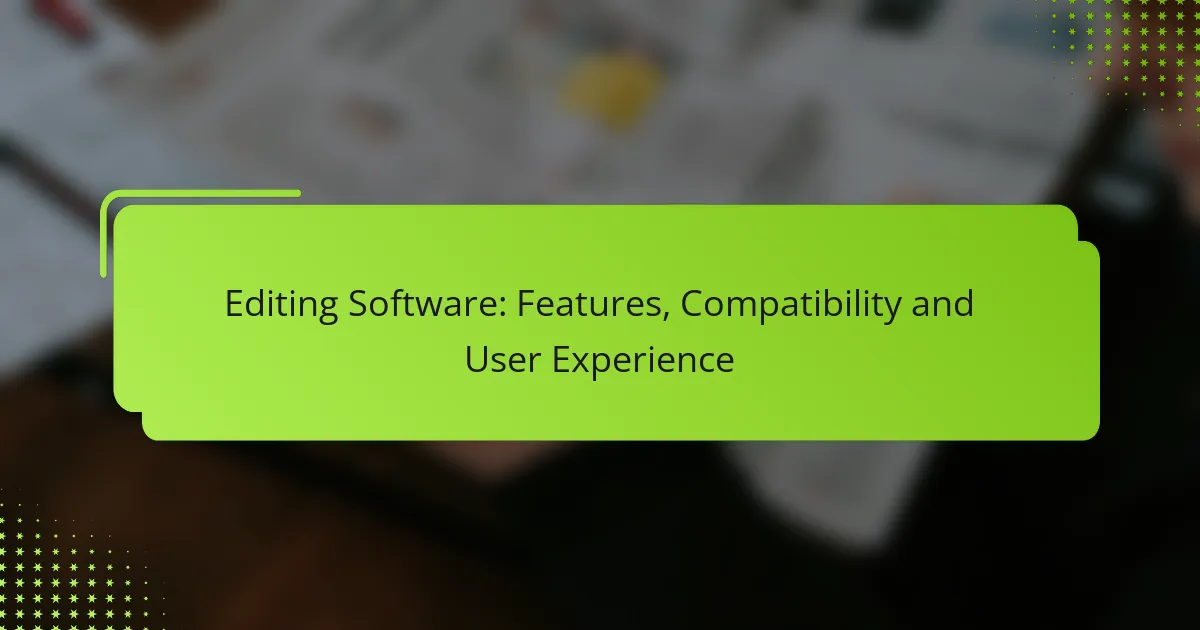Effective voiceover requires a keen focus on clarity, tone, and audience connection. Clear enunciation and appropriate pacing ensure that messages are easily understood, while the tone must resonate with the audience’s expectations. By understanding preferences and delivering content in a relatable manner, voiceover artists can create a meaningful connection that enhances communication and leaves a lasting impression.
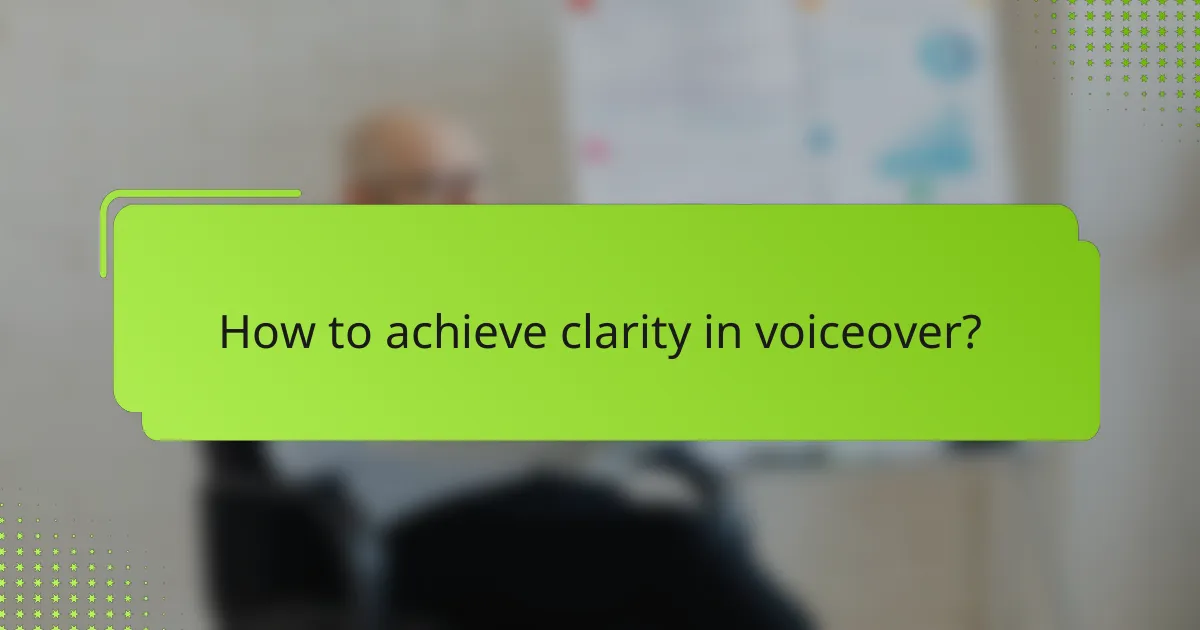
How to achieve clarity in voiceover?
Achieving clarity in voiceover involves clear enunciation, appropriate pacing, and a well-prepared script. These elements help ensure that the message is easily understood by the audience, enhancing overall communication effectiveness.
Articulation techniques
Articulation techniques focus on how clearly sounds and words are formed. Practicing consonant sounds and vowel clarity can significantly improve voiceover quality. Techniques such as tongue twisters or slow reading can help develop better articulation.
Consider using a mirror while practicing to observe mouth movements. This can help identify areas where clarity may be lacking. Regular vocal exercises can also strengthen your ability to articulate words distinctly.
Use of pauses
Strategic pauses in voiceover create emphasis and allow the audience to absorb information. Pausing before and after important points can enhance understanding and retention. A good rule of thumb is to pause for a moment after each key idea.
Avoid overusing pauses, as they can disrupt the flow. Instead, aim for a natural rhythm that complements the content. Practicing with a timer can help you find the right balance between speech and silence.
Importance of script preparation
Thorough script preparation is crucial for clarity in voiceover work. A well-structured script helps maintain focus and ensures that the message is conveyed effectively. Familiarize yourself with the script to reduce hesitation during recording.
Consider highlighting key phrases or words to emphasize during delivery. Rehearsing the script multiple times can also help identify any complex sections that may require additional clarity. This preparation minimizes errors and enhances overall performance.
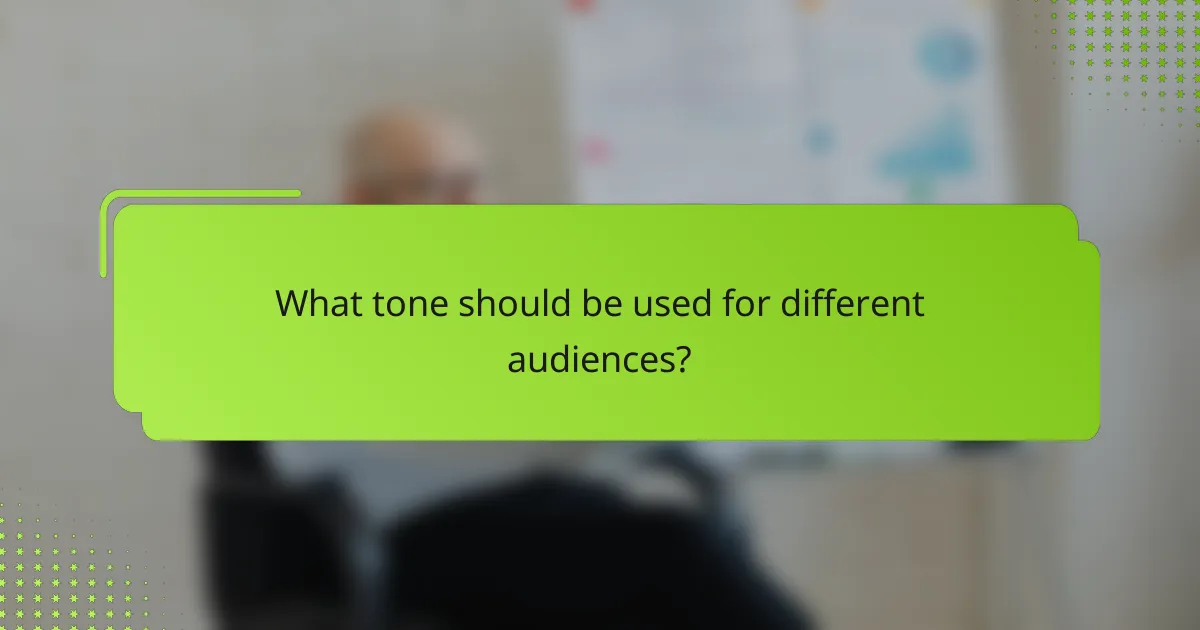
What tone should be used for different audiences?
The tone used in voiceover work should align with the audience’s expectations and the context of the content. A professional tone suits corporate clients, while a conversational tone is more effective for casual content.
Professional tone for corporate clients
A professional tone is characterized by formality, clarity, and a focus on delivering information efficiently. This tone is essential when addressing corporate clients, as it conveys authority and trustworthiness.
When using a professional tone, avoid slang and overly casual language. Instead, opt for precise vocabulary and structured sentences. For example, instead of saying “We can help you out,” say “We are equipped to assist you in achieving your goals.”
Additionally, consider the industry standards. For sectors like finance or healthcare, maintaining a formal tone is crucial due to regulatory requirements and the need for clear communication.
Conversational tone for casual content
A conversational tone is friendly, approachable, and often includes informal language. This tone works well for content aimed at a general audience, such as podcasts, YouTube videos, or social media.
To achieve a conversational tone, use everyday language and a relaxed sentence structure. Phrases like “Let’s dive into this topic” or “You might be wondering” create a connection with the audience. This tone encourages engagement and makes the content more relatable.
However, be mindful of the context. While a casual tone is appropriate for lifestyle blogs or entertainment, it may not suit more serious subjects like legal or medical information. Always tailor your tone to fit the content and audience expectations.

How to connect with your audience through voiceover?
Connecting with your audience through voiceover involves understanding their preferences and delivering your message in a relatable manner. This requires careful consideration of tone, clarity, and emotional engagement to create a lasting impact.
Understanding audience demographics
Knowing your audience demographics is crucial for tailoring your voiceover effectively. Factors such as age, gender, cultural background, and interests influence how your message is received. For instance, a younger audience may respond better to a casual tone, while a more mature audience might prefer a formal approach.
To gather demographic information, consider conducting surveys or analyzing existing data on your target market. This insight allows you to adjust your voiceover style and content to resonate with listeners, enhancing their connection to your message.
Emotional resonance in delivery
Emotional resonance in voiceover delivery can significantly enhance audience connection. The way you express emotions through tone, pace, and inflection can evoke feelings that align with your message. For example, a warm, friendly tone can create a sense of trust, while a more authoritative voice may convey confidence.
To achieve emotional resonance, practice varying your vocal delivery based on the content. Use pauses effectively to emphasize key points and allow listeners to absorb the message. Additionally, consider the emotional state of your audience; for instance, a motivational piece may benefit from an upbeat and energetic delivery.
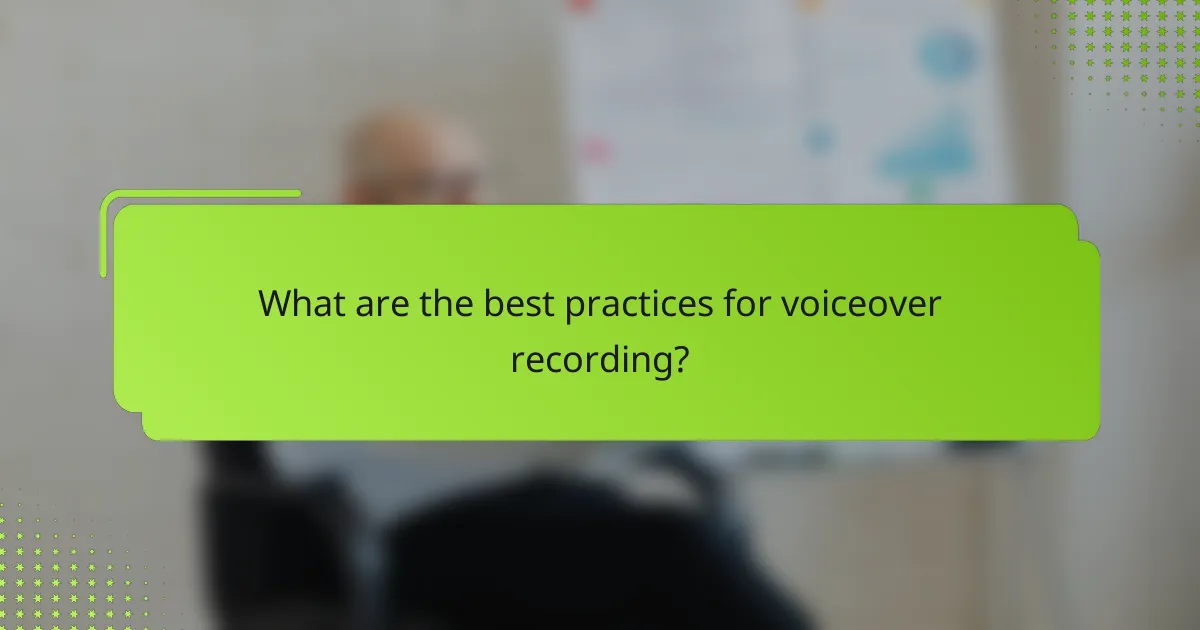
What are the best practices for voiceover recording?
The best practices for voiceover recording focus on achieving clarity, tone, and a strong connection with the audience. Key elements include selecting the appropriate microphone, creating an optimal recording environment, and understanding the nuances of voice modulation.
Choosing the right microphone
Selecting the right microphone is crucial for high-quality voiceover recordings. Dynamic microphones are often preferred for their durability and ability to handle high sound pressure levels, while condenser microphones are favored for their sensitivity and clarity in capturing vocal nuances.
Consider your budget and the type of projects you will be working on. Entry-level condenser microphones can range from $100 to $300, while professional-grade options can exceed $1,000. Always test microphones before purchasing to ensure they suit your voice and recording style.
Optimal recording environment
An optimal recording environment minimizes background noise and echo, ensuring a clean audio capture. Choose a quiet space with soft furnishings to absorb sound, or consider using acoustic panels to enhance sound quality. Avoid recording in rooms with hard surfaces that reflect sound.
For best results, aim for a room with a noise floor below 30 dB. If you cannot achieve this in your home, consider renting a professional studio. Always perform a sound check before starting your recording session to identify any unwanted noise or acoustic issues.
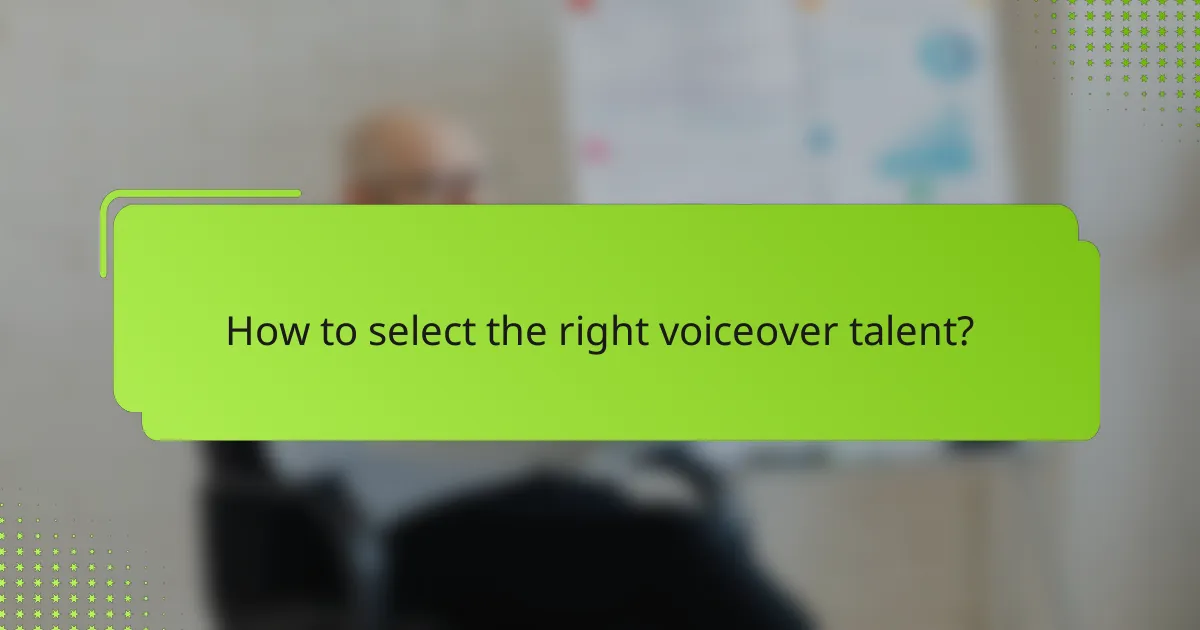
How to select the right voiceover talent?
Selecting the right voiceover talent involves evaluating their vocal qualities, experience, and ability to connect with your target audience. Consider factors such as tone, clarity, and versatility to ensure the voice aligns with your project’s goals.
Evaluating voice samples
Listening to voice samples is crucial in selecting voiceover talent. Focus on clarity, tone, and emotional delivery in the samples provided. Look for a range of styles that demonstrate the talent’s ability to adapt to different project requirements.
When evaluating samples, consider creating a checklist with key attributes such as articulation, pacing, and expressiveness. This can help you objectively compare different talents and make a more informed decision.
Assessing experience and versatility
Experience plays a significant role in a voiceover artist’s ability to deliver quality work. Look for talent with a diverse portfolio that showcases their versatility across various genres, such as commercials, narrations, and animations.
In addition to experience, consider the talent’s ability to take direction and adapt their performance based on feedback. A versatile voiceover artist can adjust their style to fit different audiences and project needs, making them a valuable asset for your production.
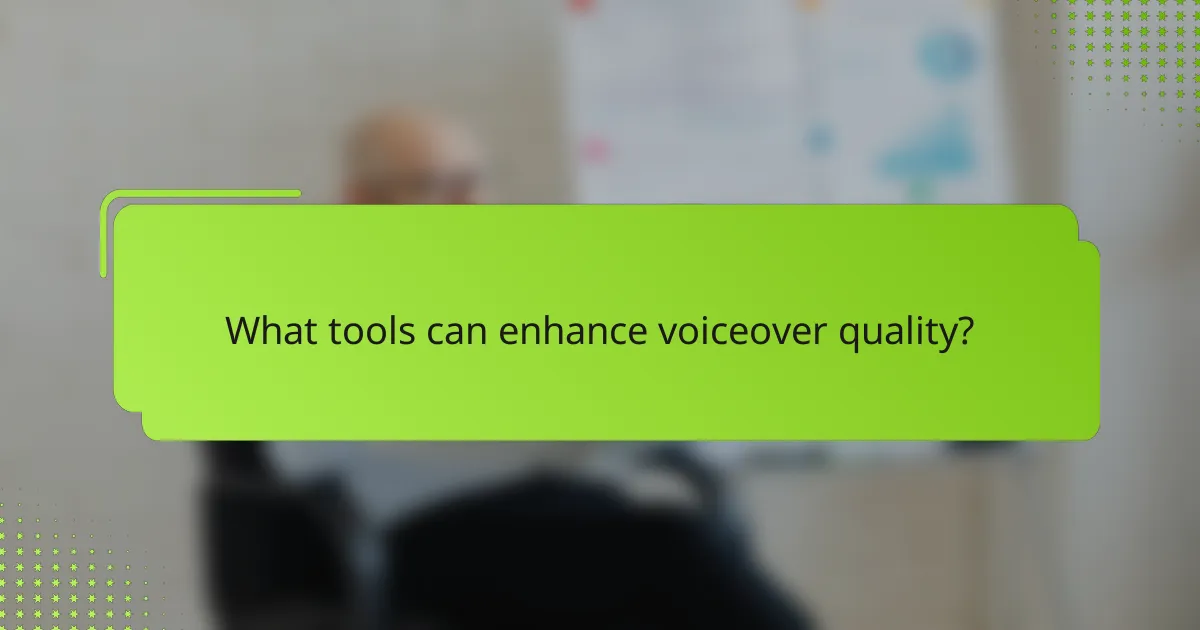
What tools can enhance voiceover quality?
To enhance voiceover quality, using the right tools is essential. Key tools include audio editing software and soundproofing solutions, which can significantly improve clarity and overall production value.
Audio editing software
Audio editing software allows voiceover artists to refine their recordings by adjusting levels, removing background noise, and adding effects. Popular options include Adobe Audition, Audacity, and GarageBand, each offering a range of features suitable for different skill levels.
When choosing software, consider your budget and specific needs. For instance, Audacity is free and user-friendly, making it ideal for beginners, while Adobe Audition offers advanced features for professionals. Look for software that supports various file formats and provides tools for equalization and compression.
Soundproofing solutions
Soundproofing solutions help create an ideal recording environment by minimizing external noise and echo. Common methods include using acoustic panels, soundproof curtains, and foam insulation to treat recording spaces effectively.
When soundproofing, assess your recording area for potential noise sources and choose materials that suit your budget. For instance, acoustic panels can range from affordable DIY options to higher-end professional products. Remember, a quiet space can drastically improve the quality of your voiceover recordings.

What are emerging trends in voiceover technology?
Emerging trends in voiceover technology focus on advancements that enhance clarity, tone, and audience connection. Innovations such as artificial intelligence, real-time voice modulation, and cloud-based platforms are reshaping how voiceovers are produced and delivered.
AI and Machine Learning in Voiceover
AI and machine learning are revolutionizing voiceover by enabling more natural-sounding voices and personalized audio experiences. These technologies analyze vast amounts of speech data to create voice models that can mimic human emotions and inflections, making the output more engaging.
For instance, AI-driven tools can generate voiceovers in various accents and styles, allowing creators to tailor their content to specific audiences. This flexibility can significantly reduce production time and costs, making high-quality voiceovers accessible to a wider range of users.
Real-Time Voice Modulation
Real-time voice modulation technology allows voice artists to adjust their tone and pitch on-the-fly, enhancing the emotional impact of their delivery. This capability is particularly useful in live performances, gaming, and interactive media, where audience engagement is crucial.
Using software that supports real-time adjustments, voice actors can quickly switch between different character voices or adapt their delivery based on audience feedback. This responsiveness can lead to a more immersive experience for listeners.
Cloud-Based Voiceover Solutions
Cloud-based voiceover solutions are gaining popularity due to their convenience and scalability. These platforms enable users to access high-quality voiceover tools from anywhere, facilitating collaboration among remote teams and streamlining the production process.
Many cloud services offer subscription models, allowing users to pay for what they need without significant upfront investment. This flexibility is particularly beneficial for small businesses and independent creators looking to produce professional-grade audio content without breaking the bank.

